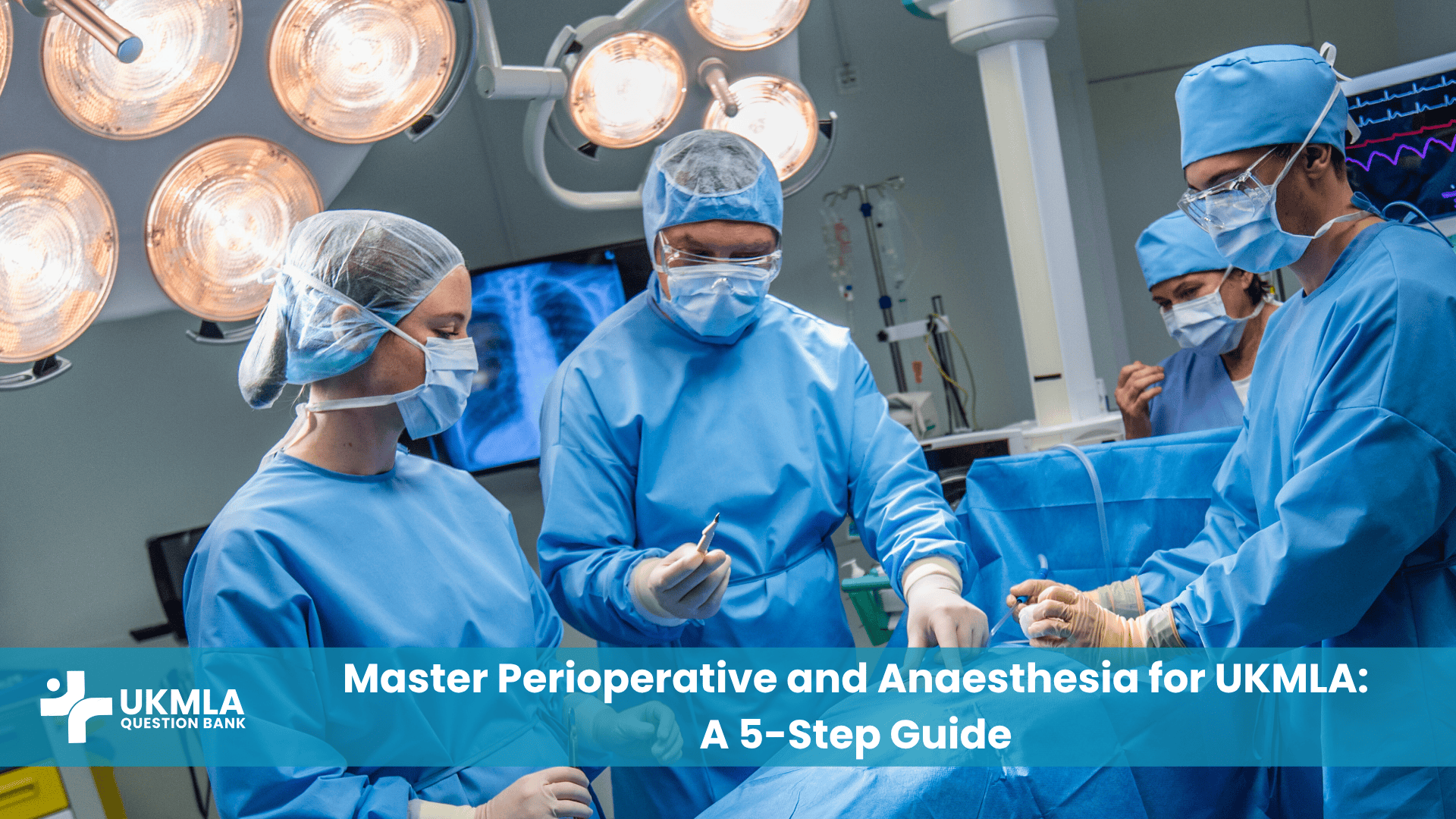Introduction
Mastering paediatric history taking for the CPSA is often a source of significant anxiety for candidates, and for good reason. Unlike a standard adult consultation, a paediatric encounter involves a complex triad of communication: you, an often-anxious parent or carer, and a child who may be pre-verbal, shy, or distressed. Successfully navigating this dynamic is a high-level skill, which is precisely why it is so frequently tested in the UKMLA’s Clinical and Professional Skills Assessment (CPSA). It’s a true test of your ability to adapt the core principles of history taking for the CPSA to a unique and challenging context.
This guide provides a proven, 7-step structure to build your confidence and ensure you cover all essential domains for a perfect performance. The goal is to move beyond a simple checklist and provide a framework for a consultation that is not only thorough but also empathetic and family-centred. This approach aligns with the professional standards outlined in the GMC’s guidance on treating patients aged 0-18. By following these steps, you can transform this feared station into an opportunity to demonstrate your clinical excellence.
Table of Contents
ToggleA 7-Step Guide to Paediatric History Taking for the CPSA
Step 1: The Introduction (Setting the Scene)
The first 30 seconds of this station are critical. Your introduction sets the tone for the entire consultation. You must build rapport with both the parent and the child simultaneously.
Start by introducing yourself clearly to the parent, stating your name and role. Then, immediately turn your attention to the child. If they are old enough, introduce yourself directly to them. Kneeling or crouching to their eye level is a powerful non-verbal cue that shows you see them as an important part of the consultation, not just an object of discussion.
Sample Phrasing: “Hello, my name is Dr. [Name], I’m one of the junior doctors here. And who is this you’ve brought with you today?” (to the parent). Then, turning to the child with a smile, “Hi [Child’s Name], it’s lovely to meet you. Is it okay if I have a chat with you and your mum/dad today?”
Step 2: The Presenting Complaint (Using Open Questions)
Begin by asking the parent an open-ended question, such as, “What’s brought you in to see us today?” Let them tell the story in their own words. Use active listening skills—nodding, making eye contact, and providing verbal encouragement.
As they speak, try to involve the child where appropriate. For a school-age child with tummy pain, you might ask them, “Can you point with one finger to where it feels the most sore?” For a younger child, you can observe their behaviour and refer to them: “I can see he looks a little bit tired today.” This demonstrates that you are constantly assessing the child as well as listening to the parent.
Step 3: Paediatric-Specific Systems Review
A standard systems review is essential, but in paediatrics, certain symptoms carry extra weight and are considered red flags. You must actively ask about them. A useful resource for this is the NICE guideline on fever in under 5s, which highlights many of these signs.
Table 1: Paediatric Red Flags by System
| System | Key Questions / Signs to Look For |
|---|---|
| General | Fever, rash (especially non-blanching), rigors, changes in behaviour (irritability, lethargy, high-pitched cry). |
| Neurological | Drowsiness, reduced consciousness, bulging fontanelle (in infants), neck stiffness. |
| Gastrointestinal | Changes in feeding, vomiting (especially bile-stained), reduced number of wet nappies (<4 in 24h), diarrhoea with blood. |
| Respiratory | Increased work of breathing (e.g., nasal flaring, tracheal tug), noisy breathing (stridor, wheeze), cyanosis. |
| Cardiovascular | Pallor, mottling, cool peripheries, tachycardia. |
Step 4: The Core Paediatric History (The “BIRTH-D” Mnemonic)
This is the heart of the paediatric history, covering the essential background information that is unique to a child. A mnemonic is the best way to ensure you don’t miss anything. A great one to use is BIRTH-D.
Table 2: The BIRTH-D Mnemonic Explained
| Letter | Domain | Key Questions to Ask |
|---|---|---|
| B | Birth History | Any problems during pregnancy? Was the delivery normal? What was the birth weight? Any stay in the special care baby unit? |
| I | Immunisations | Are their immunisations fully up to date? (Ask to see the Red Book if available). |
| R | Relationships | Who lives at home? Who is the primary caregiver? Any smokers in the house? How are things at nursery/school? |
| T | Treatment | Any previous illnesses, operations, or hospital admissions? Any allergies? Any regular medications? |
| H | History (Growth & Development) | Are they meeting their developmental milestones? Any concerns from parents or health visitors about their growth? |
| D | Diet | How is their feeding? (Breast, bottle, solids). What is their typical daily intake? Any recent changes? |
The ‘Relationships’ section is where you must have a low threshold for considering safeguarding issues. Gentle, open questions are key.
Step 5: Ideas, Concerns, and Expectations (ICE)
This is a critical step for demonstrating a patient-centred (or in this case, family-centred) approach. The parent has been worrying about their child, and you must acknowledge this.
Ideas: “Did you have any thoughts yourself about what might be causing this?”
Concerns: “What is the main thing that is worrying you about this?”
Expectations: “What were you hoping we might be able to do for you and [Child’s Name] today?”
Step 6: Age-Appropriate Engagement
Your ability to adapt your communication style is a key assessment point. What works for a toddler will not work for a teenager.
Effective communication is the cornerstone of clinical practice. In paediatrics, this means tailoring your language and approach not just to the clinical situation, but to the developmental stage of the child in front of you.
This is a core component of your UKMLA communication skills for the CPSA.
Infants/Toddlers: Communicate through the parent, but use a soft tone, smiles, and perhaps a toy to appear non-threatening.
School-Age Children (5-11): Use simple, direct, concrete questions. They can often tell you “where it hurts” or “what it feels like.”
Adolescents (12+): Address them directly as the primary historian. Be aware of confidentiality issues (e.g., using a framework like HEEADSSS) and consider asking the parent to step out for a portion of the history if appropriate.
Step 7: Summarising and Closing
Before closing, provide a concise summary of the key points to the parent. This checks your understanding and gives them a chance to correct any inaccuracies. “So, just to make sure I’ve got everything right, [Child’s Name] has had a fever and a cough for three days, he’s not been eating as much but is still drinking and has had plenty of wet nappies. The main thing worrying you is how sleepy he seems. Is that all correct?” Finally, signpost what will happen next. “Thank you for sharing all that with me. The next step would be for me to perform a gentle physical examination. Is that okay with you?”
Frequently Asked Questions (FAQ) about Paediatric History Stations
Acknowledge the distress calmly. Reassure the parent that this is normal. You can ask the parent, “Is there anything that usually helps to settle him down?” Sometimes a short break, a toy, or allowing the parent to cuddle the child can help.
Integrate the questions naturally into the social history. Use routine, non-judgmental phrasing like, “We ask all our parents this – who lives at home with [Child’s Name]?” and “Is there any smoking in the home?”
This is the Personal Child Health Record, a red book given to parents in the UK at birth. It contains all the child’s growth charts, developmental milestones, and immunisation records. Always ask if the parent has it with them.
This is age-dependent. For children under 5-6, the parent will be the main historian. For children over 7-8, you should try to direct more questions to them, while looking to the parent for clarification. For adolescents, they are the primary historian.
These are the key skills (gross motor, fine motor, speech, social) that a child is expected to achieve by a certain age. You should be familiar with the key milestones (e.g., sitting unsupported by 8 months, walking by 18 months, first words by 1 year).
It’s a psychosocial screening tool for adolescents covering: Home, Education/Employment, Eating, Activities, Drugs, Sexuality, Suicide/Depression, and Safety. It’s a framework for exploring sensitive topics.
Acknowledge both perspectives calmly and without taking sides. You can say, “Thank you both, it’s helpful to get a full picture. So, it sounds like…” and try to find common ground or summarise both points.
No. Like any clinical tool, it should be a mental framework that guides your questions. You should seamlessly integrate the questions into a natural, flowing conversation.
It’s better to realise and go back than to leave a gap. You can say, “There is just one other area I wanted to ask about…” and then ask the question. This shows you are reflective and thorough.
It’s marked on multiple domains: your clinical knowledge (asking the right questions), your communication skills (how you interact with the parent and child), your structure and organisation, and your ability to maintain a patient-centred approach.
Conclusion
Success in paediatric history taking for the CPSA is not about having a perfect script; it’s about having a reliable structure. The 7-step framework outlined in this guide—from introduction to summary—provides a robust scaffold that ensures you cover all the critical domains in a logical, efficient, and empathetic manner. By combining this structure with the BIRTH-D mnemonic, you create a powerful system that prevents you from getting lost, even under the pressure of the exam.
Practice this framework until it becomes second nature. The more you use it, the more your confidence will grow, allowing you to focus on the most important part of the consultation: building a therapeutic relationship with the child and their family. For more in-depth clinical knowledge, refer to our comprehensive guide on paediatrics for the UKMLA.




